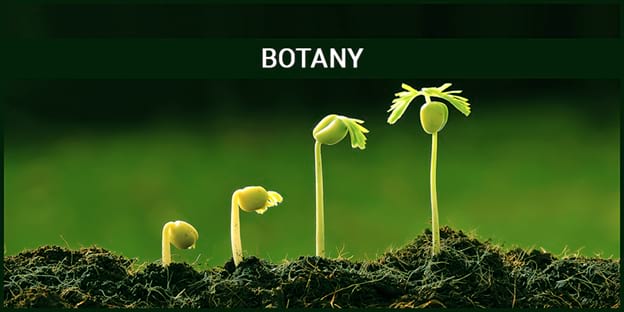The culminating chapter explores the dynamic processes of growth, differentiation, and development in plants. Students learn about plant hormones and their roles in coordinating responses to environmental and developmental signals. We examine tropisms, photoperiodism, vernalization, seed dormancy, and germination as examples of regulated developmental processes. Through understanding these mechanisms, students appreciate how plants integrate internal and external cues to optimize their growth patterns throughout their life cycles, demonstrating the remarkable plasticity and adaptability of plant development.RetryClaude can make mistakes. Please double-check responses.
CHAPTER 11: PLANT GROWTH AND DEVELOPMENT
Introduction
Plant growth and development involve complex processes that transform a single cell (zygote) into a complex multicellular organism. Growth is quantitative (increase in mass, size), while development is qualitative (differentiation, specialization).
Characteristics of Plant Growth
- Indeterminate growth: Plants grow throughout their life through meristems
- Open growth system: New cells and tissues continuously added
- Plasticity: Ability to modify growth according to environmental conditions
- Polarity: Distinct root and shoot systems developing in opposite directions
Phases of Growth
- Cell Division (Meristematic Phase)
- Rapid cell division in meristematic regions
- Small cells with dense cytoplasm and large nuclei
- Thin primary cell walls, minimal vacuoles
- Cell Elongation (Elongation Phase)
- Cells increase in size
- Development of central vacuole
- Synthesis of primary cell wall components
- Cell Maturation (Differentiation Phase)
- Cells acquire specific structures based on function
- Secondary wall formation in some cells
- Specialized tissue formation
Types of Growth
- Primary Growth
- Elongation of shoots and roots
- Occurs through apical meristems
- Secondary Growth
- Increase in girth/thickness
- Occurs through lateral meristems (vascular cambium, cork cambium)
Measurement of Growth
- Arithmetic Growth
- Linear increase over time
- Formula: L = L₀ + rt (L = length, L₀ = initial length, r = growth rate, t = time)
- Seen in elongating roots, stems
- Geometric Growth
- Exponential increase
- Formula: W = W₀eʳᵗ (W = final size, W₀ = initial size, r = growth rate, t = time)
- Seen in embryonic growth, population growth
- Sigmoid Growth (S-curve)
- Combination of slow, rapid, and declining growth phases
- Most common in whole plants and plant organs
Plant Growth Regulators (Phytohormones)
- Auxins
- Primary auxin: Indole-3-acetic acid (IAA)
- Functions: Cell elongation, apical dominance, root initiation, fruit development
- Synthesized in shoot apex and young leaves
- Gibberellins
- Over 100 different forms
- Functions: Stem elongation, breaking seed dormancy, fruit growth, stimulating enzyme production during germination
- Overcome genetic dwarfism
- Cytokinins
- Examples: Zeatin, kinetin
- Functions: Cell division, delay senescence, promote chloroplast development, overcome apical dominance
- Found primarily in root tips, embryos, fruits
- Ethylene
- Gaseous hormone
- Functions: Fruit ripening, abscission of leaves and fruits, triple response in seedlings
- Produced during tissue damage, fruit ripening, flooding
- Abscisic Acid (ABA)
- Inhibitory hormone
- Functions: Stomatal closure, seed dormancy, stress responses, inhibits growth
- Increases during drought stress
Photoperiodism
- Plant responses to relative lengths of light and dark periods
- Short-day plants: Flower when days are shorter than critical length (e.g., chrysanthemum, poinsettia)
- Long-day plants: Flower when days are longer than critical length (e.g., wheat, spinach)
- Day-neutral plants: Flowering independent of photoperiod (e.g., tomato, cucumber)
- Phytochrome: Photoreceptor pigment involved in photoperiodic responses
Vernalization
- Cold treatment required by some plants to induce flowering
- Examples: Winter varieties of wheat, rye, barley
- Prevents premature flowering in biennials and winter annuals
Seed Dormancy and Germination
- Dormancy: Temporary suspension of growth even under favorable conditions
- Causes of dormancy:
- Impermeable seed coats
- Presence of growth inhibitors (ABA)
- Immature embryos
- Special light or temperature requirements
- Breaking dormancy:
- Scarification (mechanical or chemical)
- Stratification (cold treatment)
- Light exposure
- Leaching of inhibitors
- Hormone treatments (gibberellins)
Senescence and Abscission
- Senescence: Aging process leading to death of plant parts or whole plant
- Abscission: Shedding of plant parts (leaves, flowers, fruits)
- Regulated by hormonal balance (ethylene, ABA promote; cytokinins delay)
- Formation of abscission zone at base of petiole or pedicel
Environmental Factors Affecting Growth
- Light (intensity, duration, quality)
- Temperature (affects enzyme activity and metabolic rates)
- Water (essential for cell enlargement and turgidity)
- Oxygen (necessary for respiration)
- Mineral nutrients (macro and micronutrients)
- Soil conditions (pH, aeration, structure)
Significance of Understanding Plant Growth
- Agricultural productivity enhancement
- Crop improvement through growth regulation
- Control of flowering time, fruit ripening
- Propagation techniques (tissue culture, cuttings)
- Stress tolerance development
- Conservation of endangered plant species
